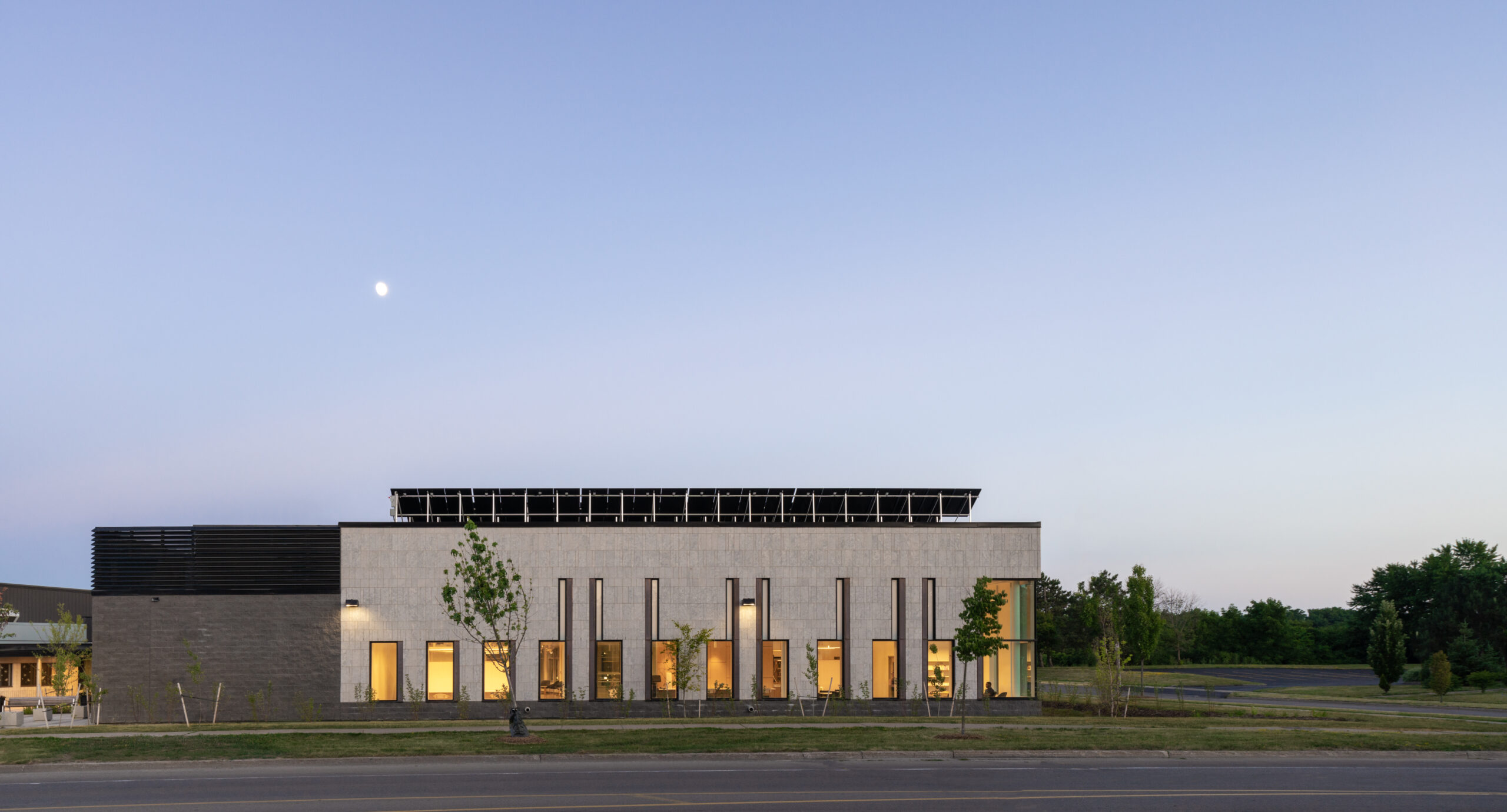Hamilton Public Library’s Valley Park Branch addition has earned LEED Gold Certification, recognizing its exceptional sustainable design qualities and its proud place within the community as an educational tool.
“Library design is one of our passions, perhaps because they have such potential for social, economic, and environmental impact within our communities; pillars of what sustainability means within our work,” says Drew Hauser, Director of Design & Business Development at mcCallumSather. “One of the most exciting elements of library design is how we can use these community spaces as an educational tool demonstrating sustainable design leadership within their communities as we all strive for a Net Zero Carbon community by 2050.”
Projects pursuing LEED certification earn points for green building strategies across several categories, aspects of design that are vigorously measured and verified through design, construction, and post construction. As the second highest ranking a project can achieve, this is a significant accomplishment and demonstration of Hamilton Public Library’s commitment to sustainability.
“HPL’s Valley Park Branch demonstrates a commitment to sustainability, inside and out. The team worked together to bring about a community space that reflects the needs of this growing neighbourhood,” says Paul Takala, Chief Librarian/CEO at Hamilton Public Library. “This LEED Gold Certification signifies thoughtful environmental, social, technological and educational integration and really sets the stage for future library spaces.”
Having opened in 2022, Valley Park Library rose from the fifteenth to the third most used space amongst the Hamilton Public Library Branches, drawing in 171,000 visitors with its new expanded space. The addition transformed the public face of the Community Centre and is designed to reduce 50% of the facility’s carbon footprint.
The high-quality building envelope, systems and site work together to drive down energy demand in the facility, and together with a 30 KW solar system incorporated on its roof contributes to 25% of the Library’s expected demand.
Stormwater captured on the areas of new roofing is directed to the planted bioswales where it travels along the contours of the property to maximize infiltration to the local aquifer. The water will fuel the growth of vegetation on-site to remediate soils or efficiently flow off-site. These stormwater management techniques help with mitigating negative environmental stresses including the effects of stormwater surges on existing infrastructure and the poor quality of urban outflow.
The Library developed an inventive marketing program featuring the Library’s beloved mascot Scout. The program was designed to share the qualities of LEED Gold design and educate the community on how sustainability was integrated into the project. This came to life through online animated games, in-branch scavenger hunts and activity books, and a social media campaign designed to engage all ages within the community.
Photography Credit: Adrian Ozimek
Read more about Valley Park Community Branch







